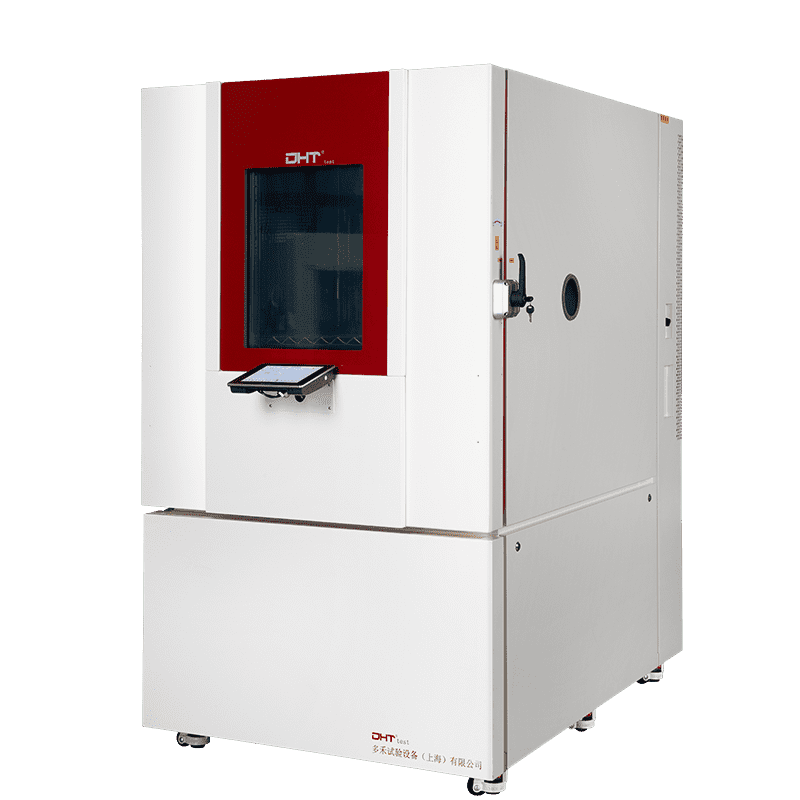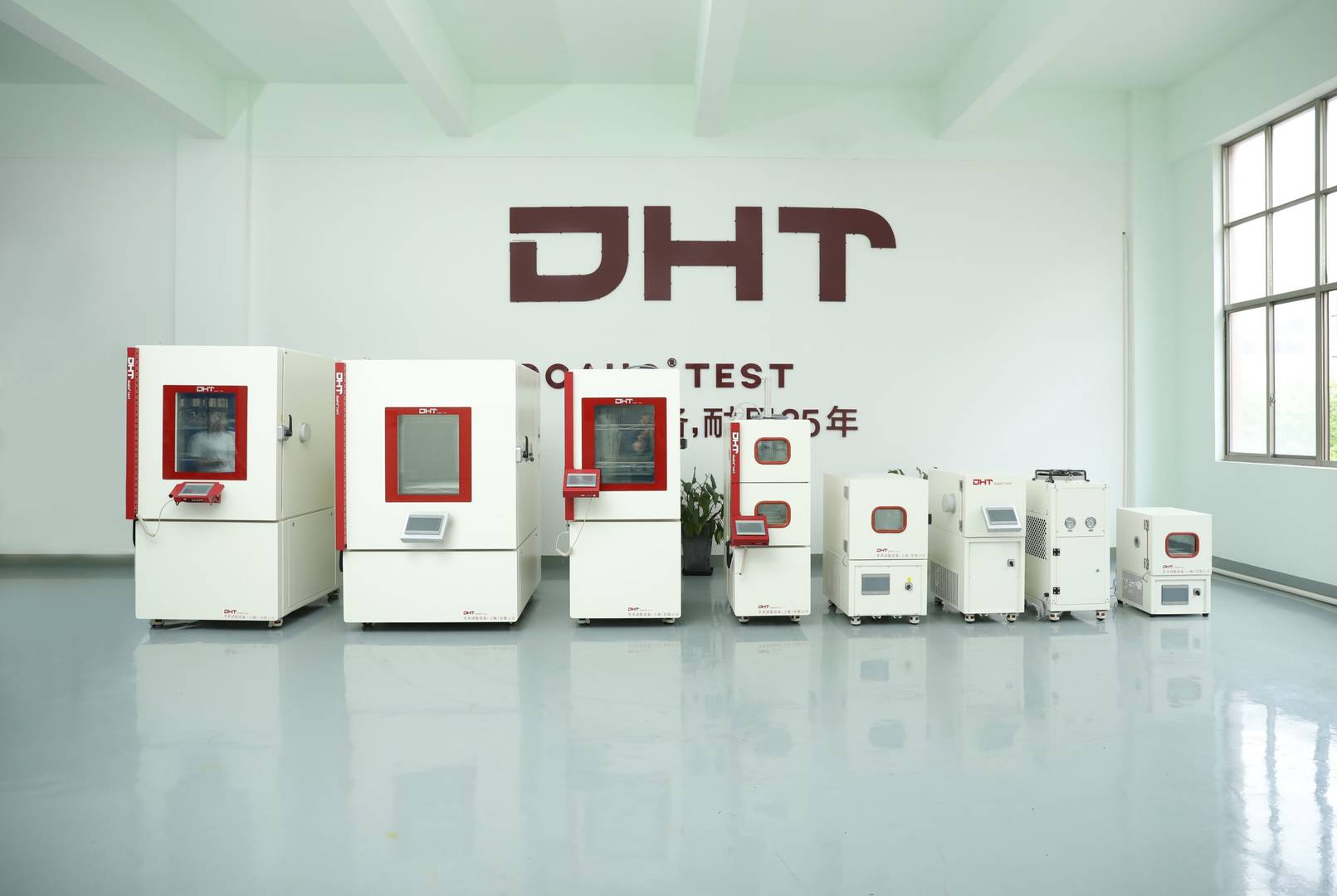Written by Robin
Senior Engineer, Doaho Test (DHT®)
In materials and product reliability testing, the corrosion test chamber is a critical piece of laboratory equipment. By simulating various corrosive environments, these chambers help companies evaluate the durability of metals, coatings, and electronic components under different climatic conditions.
Among them, the two most common types are the Salt Spray Test Chamber and the Cyclic Corrosion Test Chamber (CCT). So, what are the differences between them, and in what scenarios should you choose one over the other?
Salt Spray Test Chamber
The salt spray test chamber is the cornerstone of corrosion testing, with the longest history and the most established standards. Its working principle is simple and straightforward: compressed air atomizes a sodium chloride (NaCl) solution of a specific concentration, which is then continuously sprayed onto the surface of test samples in a sealed chamber maintained at a constant temperature (typically 35°C). This creates a stable and extremely aggressive corrosive environment.
It simulates an extreme but singular scenario—for example, coastal regions perpetually exposed to sea fog, or products continuously immersed in a saline electrolyte.
The greatest advantage lies in its uniformity and repeatability of testing conditions. Because the environment is constant, operation is simple, and the cost is relatively low, it is widely applied in:
-
Rapid quality consistency checks: Verifying whether a batch of plated or coated products meets basic process requirements.
-
Material screening: Quickly comparing the inherent corrosion resistance of different materials or surface treatments.
-
Compliance with classic standards: Such as ASTM B117, ISO 9227, JIS Z 2371, and other long-established basic testing standards.
However, its limitation also lies in its “purity.” In the real world, almost no product is exposed to continuous salt fog 24 hours a day, 365 days a year. Natural weather is dynamic: daytime drying, nighttime condensation, rainfall, and sunlight exposure. This single, constant testing mode may accelerate corrosion, but it often leads to mechanisms that differ from reality, making it unable to accurately predict the actual service life and failure modes of products in real environments.
Cyclic Corrosion Test Chamber
To address the gap between traditional salt spray testing and real-world accuracy, the cyclic corrosion test chamber was developed. It represents the evolution and advancement of corrosion testing technology. It is not merely a “spray chamber,” but a sophisticated environmental simulation system.
Its core lies in the word “cyclic.” Through precise program control, the equipment simulates complex environmental changes such as day-night alternation and sunny-rainy cycles, subjecting samples to carefully designed cyclic stages.
A typical cycle may include:
-
Salt spray phase: Simulating acid rain or salt mist attack.
-
Drying phase: Heated dry air simulates sunlight exposure, evaporating moisture, concentrating salts, and intensifying stress corrosion.
-
Humidity/condensation phase: Creating a 100% relative humidity environment, simulating nighttime or humid climates, promoting under-film electrochemical corrosion.
-
Ambient dwell phase: Sometimes included to allow natural progression of corrosion reactions.
This alternation between “wet” and “dry” is the true nature of real-world corrosion. The drying stage is especially critical, as evaporation increases the concentration of corrosive salts, intensifying penetration and attack on coatings and substrates. When moisture returns, corrosion propagates deeper from these weakened points. This testing method reveals blistering, red rust, creepage, and other phenomena with much higher correlation to outdoor exposure, making it more accurate and reliable for predicting long-term product performance.
It typically follows more advanced testing standards, such as SAE J2334 (automotive), GM 9540P, Ford BI 103-01, and other CCT (Cyclic Corrosion Test) standards.
Cyclic Corrosion Test Chamber vs. Salt Spray Test Chamber: Key Differences
| Key Aspect | Salt Spray Test Chamber | Cyclic Corrosion Test Chamber |
| Test Environment | Single Salt Spray Environment | Multi-Cycle (Salt Spray + Drying + Humidity + Temperature Cycling) |
| Level of Simulation | Significant Gap from Real-World Conditions | Closer to Real-World Service Conditions |
| Standard Methods | ASTM B117, ISO 9227 | SAE J2334, ISO 16701, etc. |
| Cost | Low Equipment Cost, Low Operating Cost | Higher Equipment Investment, More Complex Maintenance |
| Application Industries | Basic Corrosion Testing for Metal Plating and Coatings | Automotive, Aerospace, Marine, Long-Term Durability Assessment |
How to Choose a Corrosion Test Chamber?
Once you understand their fundamental differences, the choice becomes clear. You can think of salt spray testing as a marathon, testing endurance in a single extreme condition. Meanwhile, cyclic corrosion testing is more like a triathlon, testing adaptability under alternating environmental stresses.
Choose a Salt Spray Test Chamber when your goal is:
-
Basic quality control and incoming inspection: Quickly verifying whether products meet basic specifications.
-
Cost control: Budget is limited, and the purpose is mainly internal comparison rather than lifetime prediction.
-
Compliance with specific traditional standards: Your product must adhere to legacy salt spray standards such as ASTM B117.
Choose a Cyclic Corrosion Test Chamber when your goal is:
-
Real-world correlation: Accurately predicting product service life and failure modes in outdoor environments.
-
Meeting advanced industry standards: Especially in automotive, aerospace, and defense sectors, where standards have fully shifted to cyclic corrosion testing.
-
Advanced R&D: Developing new materials and coatings, requiring in-depth understanding of failure mechanisms under multiple stress conditions.
-
Improved test acceleration: Cyclic testing often reproduces years of outdoor corrosion in a much shorter time frame, offering superior acceleration.
Conclusion
From salt spray chambers to cyclic corrosion test chambers, the key question is not “which is better,” but rather “which is more suitable for your testing goals and industry standards.”
If your focus is on incoming material inspection and basic compliance verification, the salt spray chamber remains efficient and reliable. But when you need to evaluate long-term durability, enhance product reliability, and win the trust of high-end customers and strict certifications, the Cyclic Corrosion Test Chamber (CCT) is the more forward-looking choice.
As a specialist in environmental reliability testing, DHT® offers both standard and customized cyclic corrosion testing solutions tailored to your samples, standards, and budget. With DHT®, you can achieve more scientific testing capabilities, higher product quality, and stronger competitiveness.
👉 Contact the DHT® technical team today for equipment selection and tailored solutions.


